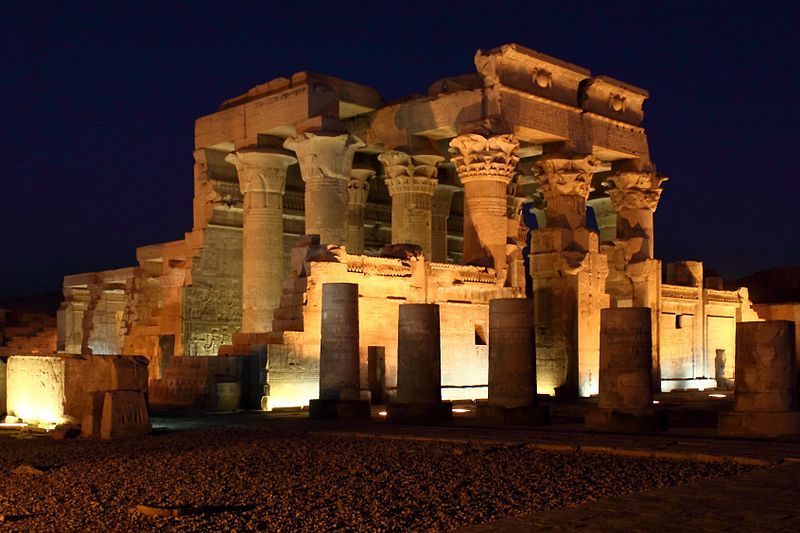
Archaeologists working at Egypt's ancient Kom Ombo temple have found a sandstone carving dating back to shortly after the time of Alexander the Great.
According to a Facebook post by Egypt's Ministry of Antiquities, the "architectural element" was discovered during excavations accompanying a project to lower the temple's groundwater level.
Initial analysis places the carving in the time of the Emperor Philip Arrhidaeus, a half-brother of Alexander the Great, who ascended to the throne of Macedonia when Alexander died, the statement said.
Researchers have yet to identify the original location of the artefact, which measures about 83 cm long, 55 cm wide and 32 cm thick, but hieroglyphic inscriptions on the sandstone bear Arrhidaeus name, along with references to the god Sobek. That may make it the oldest carving in the temple.
Sobek, a crocodile deity, was one of two gods to whom the temple was dedicated. Depicted as a mummified crocodile, he was also considered god of the Nile.
The carving also includes an image of Arrhidaeus' face, and an image of the goddess Nekhbet.
The temple of Kom Ombo is open to visitors and tourists. According to the Lonely Planet, it is "unique in Egypt" for its devotion to two gods at once; Sobek, and Horus the Elder.
While it was probably based on a much older structure, the temple that stands on the site today was begun by Ptolemy VI Philometor, a Macedonian king of Egypt who ruled in the mid-100s BC.
The temple's structure is symmetrical, with "twin entrances, two linked hypostyle halls with carvings of the two gods on either side, and twin sanctuaries." Experts believe there were two priesthoods at the temple, one dedicated to each god.
Among its other artefacts of archaeological interest, the temple includes "a finely executed relief showing Ptolemy XII Neos Dionysos being presented to Haroeris by Isis and the lion-headed goddess Raettawy, with Thoth looking on."
Uncommon Knowledge
Newsweek is committed to challenging conventional wisdom and finding connections in the search for common ground.
Newsweek is committed to challenging conventional wisdom and finding connections in the search for common ground.
About the writer
Josh is a staff writer covering Europe, including politics, policy, immigration and more.
To read how Newsweek uses AI as a newsroom tool, Click here.








